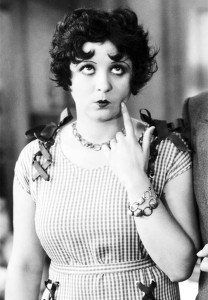Betty Boop is one of the most popular and beloved fictional characters in the world. She is a caricature of a young woman of the 1920’s Jazz Age, known as a “flapper.” Betty Boop’s large head and black curly hair give her a striking appearance because her head is set upon a cute curvy body.
People are charmed by her sophistication and youthful, sweet voice. Television and print cartoons popularized Betty Boop. She now is a successfully marketable image and a popular collectible. You can buy Betty Boop dolls, toys, clothing, mugs, bric-a-brac, graphics, and other items. These items are made of various materials, including paper, plastics, textiles, ceramics, and metals.
 Betty Boop is regarded as one of the first sex symbols ofthe animated screen. She was created by the cartoonist and film director Max Fleischer (1883 – 1972). Betty Boop made her first appearance in 1930 in the cartoon Dizzy Dishes, an episode in Fleischer’s Talkartoon series. He fashioned Betty Boop somewhat in the likeness of singer Helen Kane (1904 -1966).
Betty Boop is regarded as one of the first sex symbols ofthe animated screen. She was created by the cartoonist and film director Max Fleischer (1883 – 1972). Betty Boop made her first appearance in 1930 in the cartoon Dizzy Dishes, an episode in Fleischer’s Talkartoon series. He fashioned Betty Boop somewhat in the likeness of singer Helen Kane (1904 -1966).
Kane filed a $250,000 lawsuit in 1932 against Paramount and Fleischer, charging unfair competition and wrongful appropriation. The case dragged on for over two years until the judge ruled against Kane because she could not prove that Betty Boop represented traits that were Kane’s alone. There was a notable resemblance of the animated Betty Boop to Helen Kane.
Betty Boop was subjected to censorship in the mid-1930s as a result of the Hays Code applied to motion pictures released by major studios from 1930 to 1968. Judging from Betty Boop’s popularity today, she doesn’t seem to have lost any of her charm.


















Follow Us